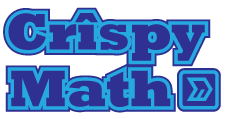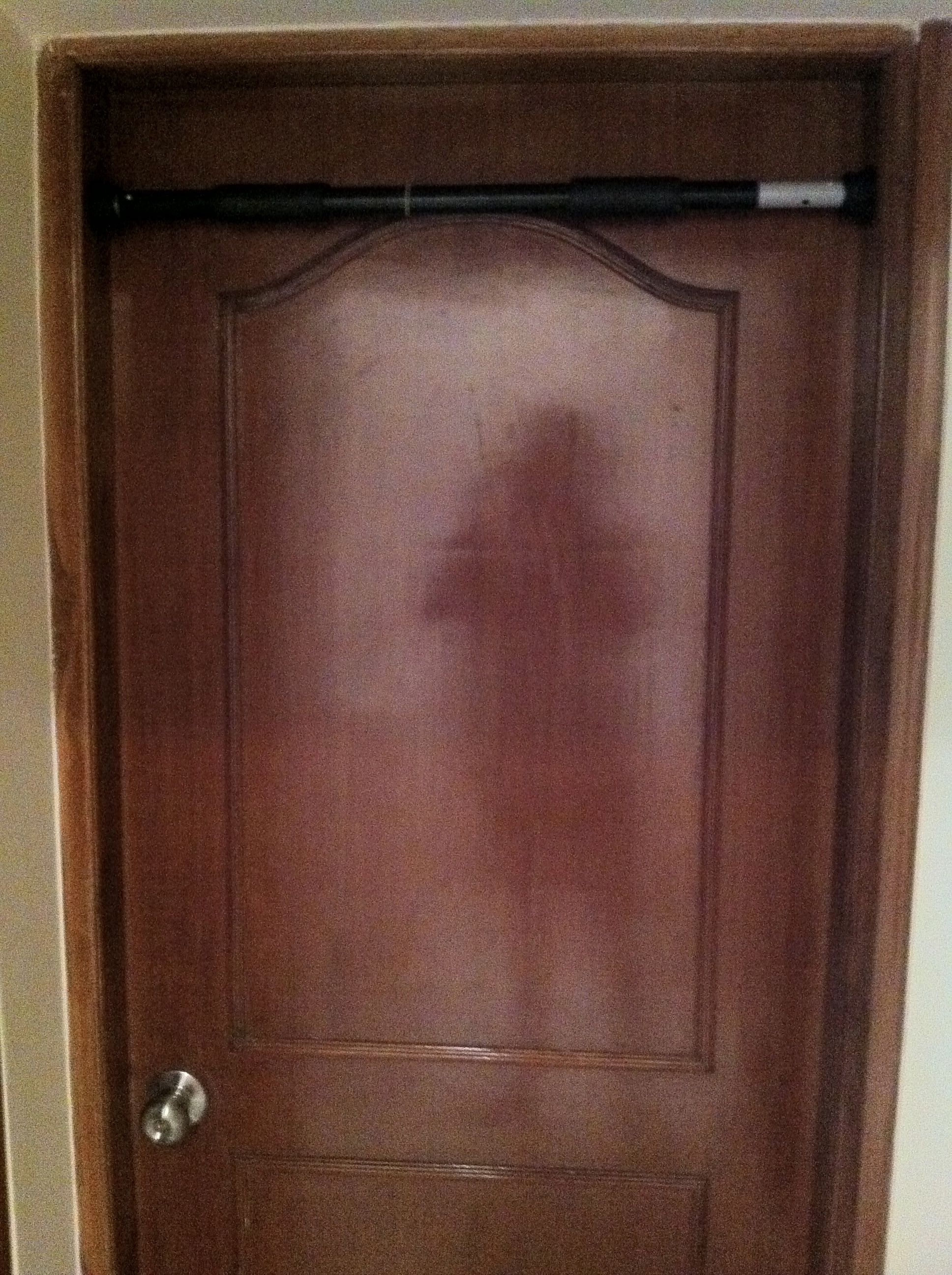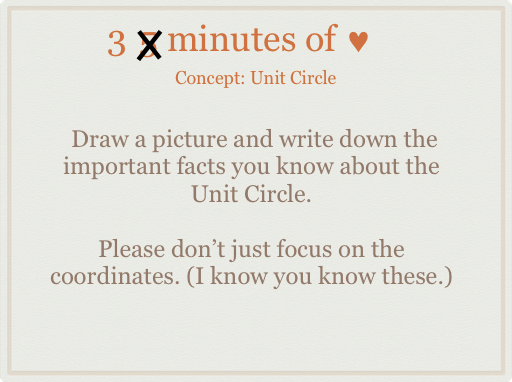Scaffolding Trig Graphs - Desmos Kong
/Yesterday evening, way too late to be planning a new lesson I was noodling through Sam Shah's filing cabinet looking for something that would allow students to practice trig functions, ideally kind of game like. There is good stuff there, like this graphic organizer from Mimi, but nothing like what I was looking for. For years, here and there, I have heard people mention the graphing game Green Gobs but I have never actually used it myself. Still, downloading software for all of my students to use (that had to be purchased) was going to be out of the question, at least last night. Maybe I could make something similar with Desmos. I have been using Desmos more and more with the kids and loving it. A little while later I came up with Trig Scaffolding.
Anyway, let's get into it. The activity (1) I created is called Trig Scafolding: How High Can You Get? The entire thing is built into one Desmos worksheet. I demoed the activity for my students on the big screen and then shared the link.
I think this is all best explained with screen shots:

When students open up the Desmos Link they see the points of the function they are trying to graph.
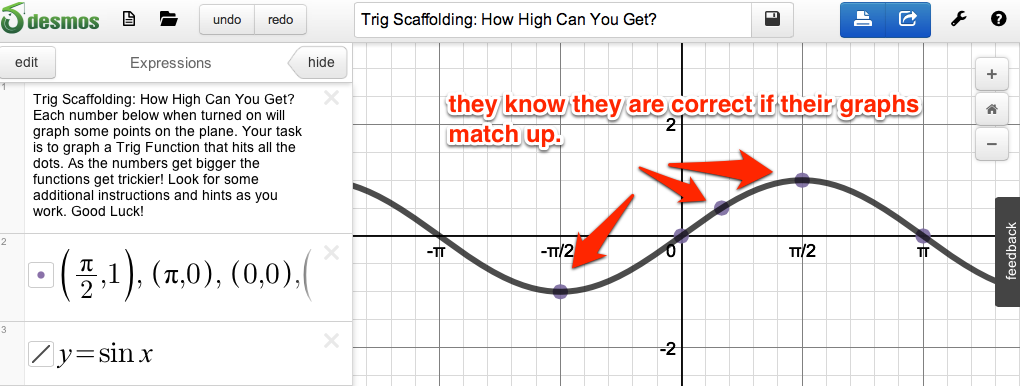
Students know they are right if their graph matches up with the points.

The kids can «climb up» to the next graph by turning off the graphs they were working on and turning on the next ones.
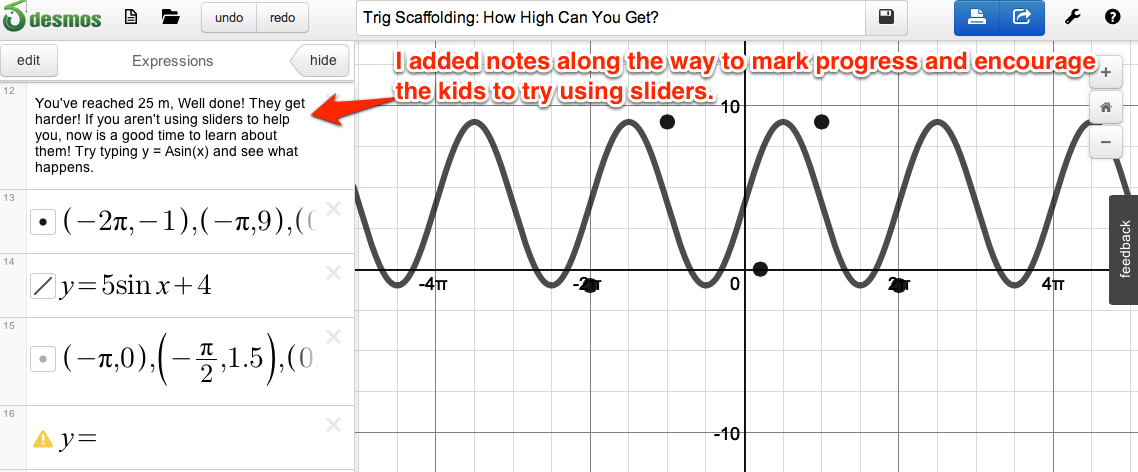
I added notes along the way in Desmos to mark students progress and remind them about Desmos's excellent features like the easy integration of sliders. I spent the entire activity circulating and working with pairs of students. I was impressed with the total engagement the kids had through the block and the different strategies they were using to figure out the graphs.
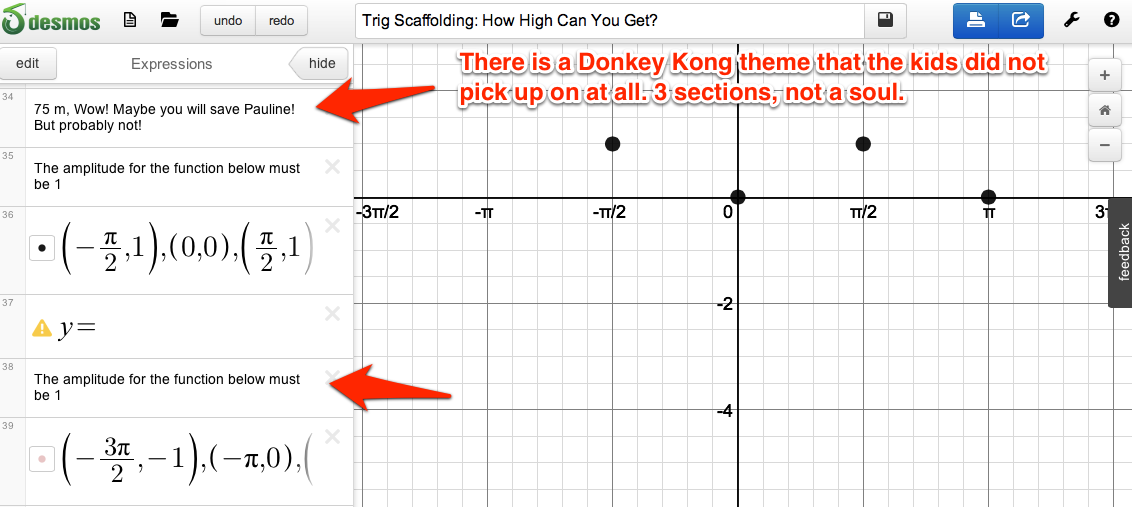
No one picked up on the very thin Donkey Kong theme, but overall the activity worked really well. A couple groups did engage in some mindless guessing and checking, but most of the kids were really trying to reason out the functions with Desmos along with pencil and paper or whiteboards. Although I didn't do so, it would be easy for students to turn in their «solutions» for this assignment by having them save their graph and sharing the link with you.
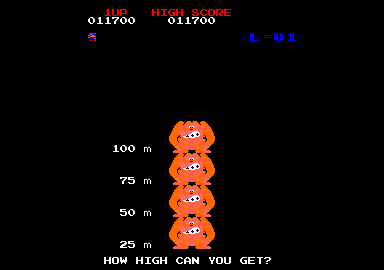
I was really unsure how difficult kids were going to find this when I created it, but the scaffolding of the problems seemed to be decent. It is easy enough to adjust anyhow. I think in the next iteration I will add more problems where I place restrictions on the graph, either to make the problems more challenging, or increase the level of scaffolding.
Have you tried anything like this with Desmos? I would love to see it and hear about it!
(1) I called it a game with my first class yesterday and the kids kept comparing it to other games like Danger Cards, I called it an activity in the other classes and there was none of this nonsense. In fact in the other classes the kids told me that it was «a good game!»
